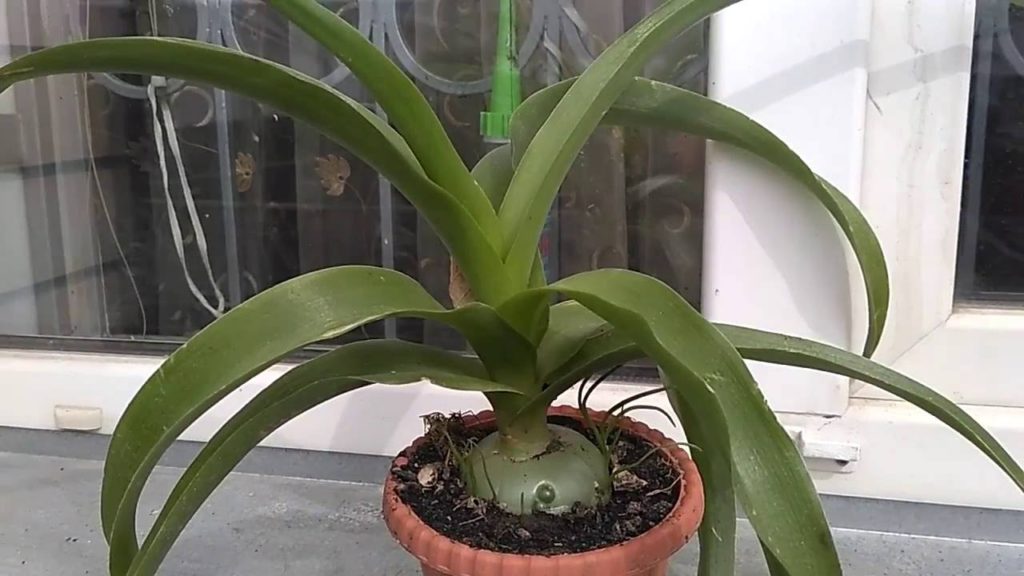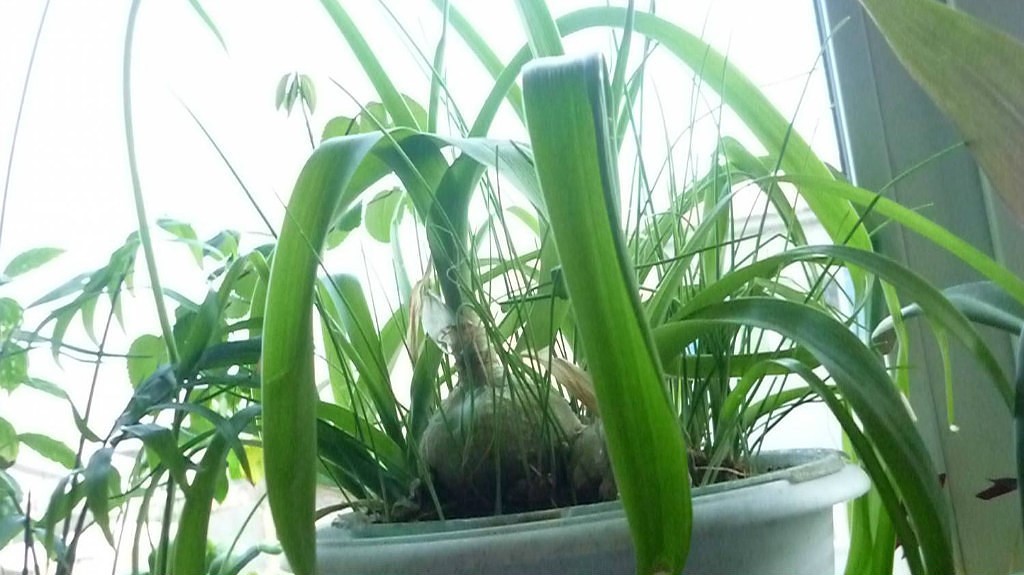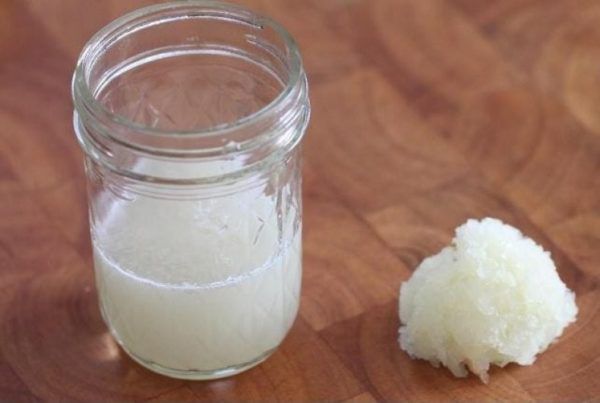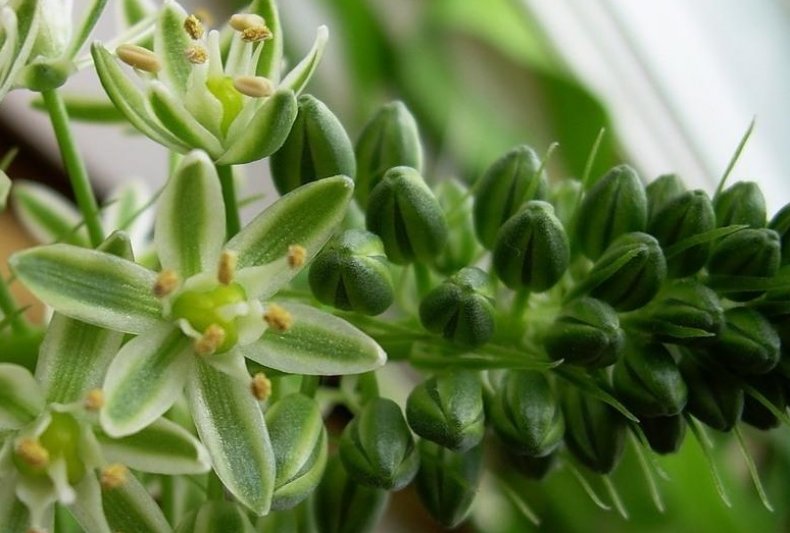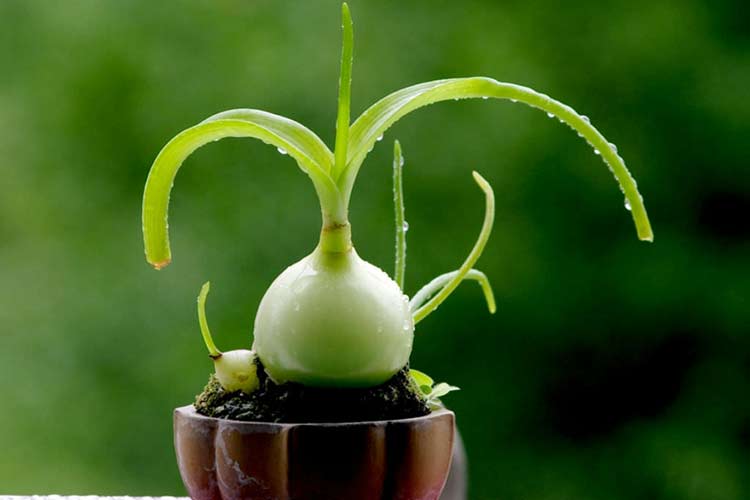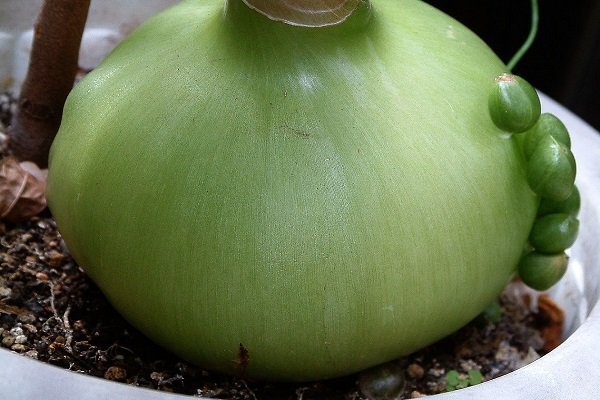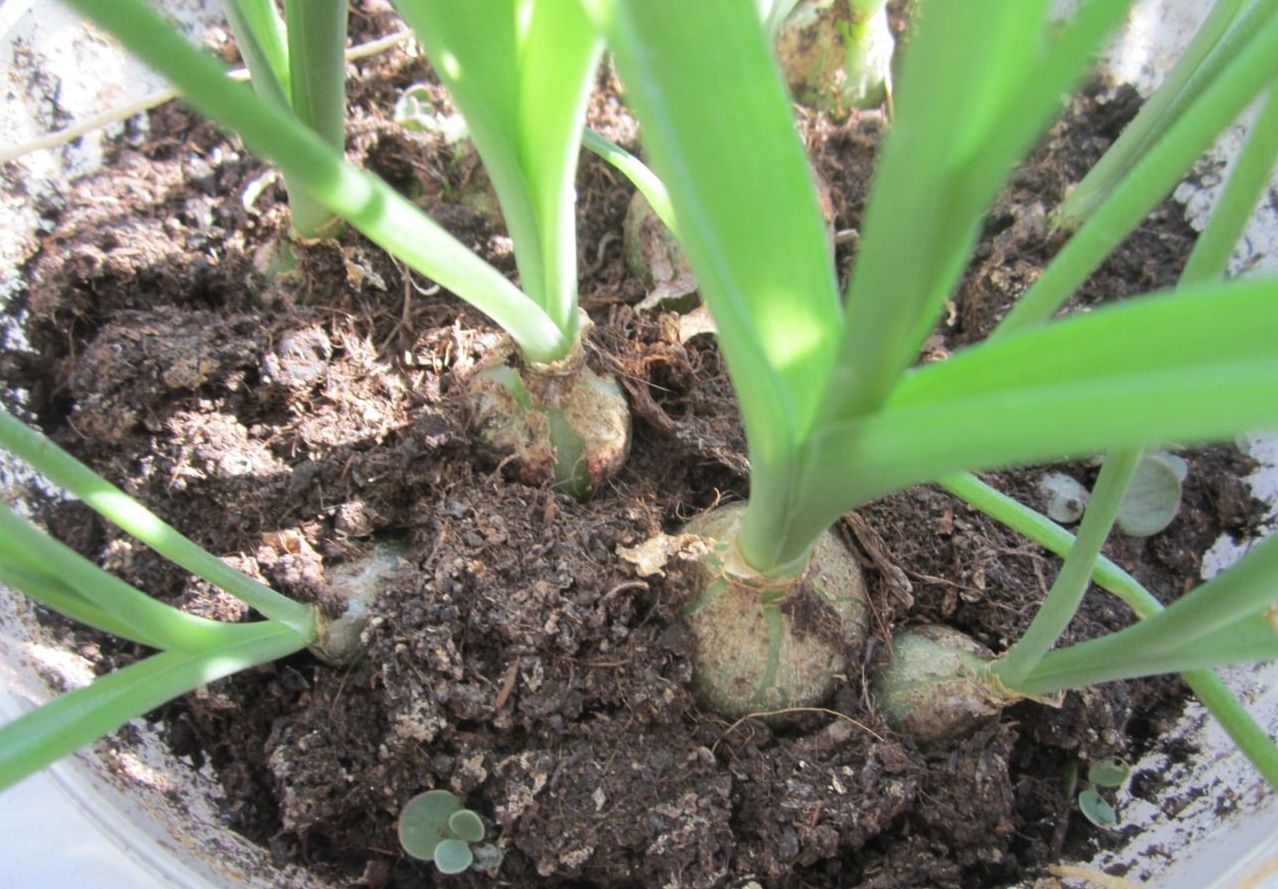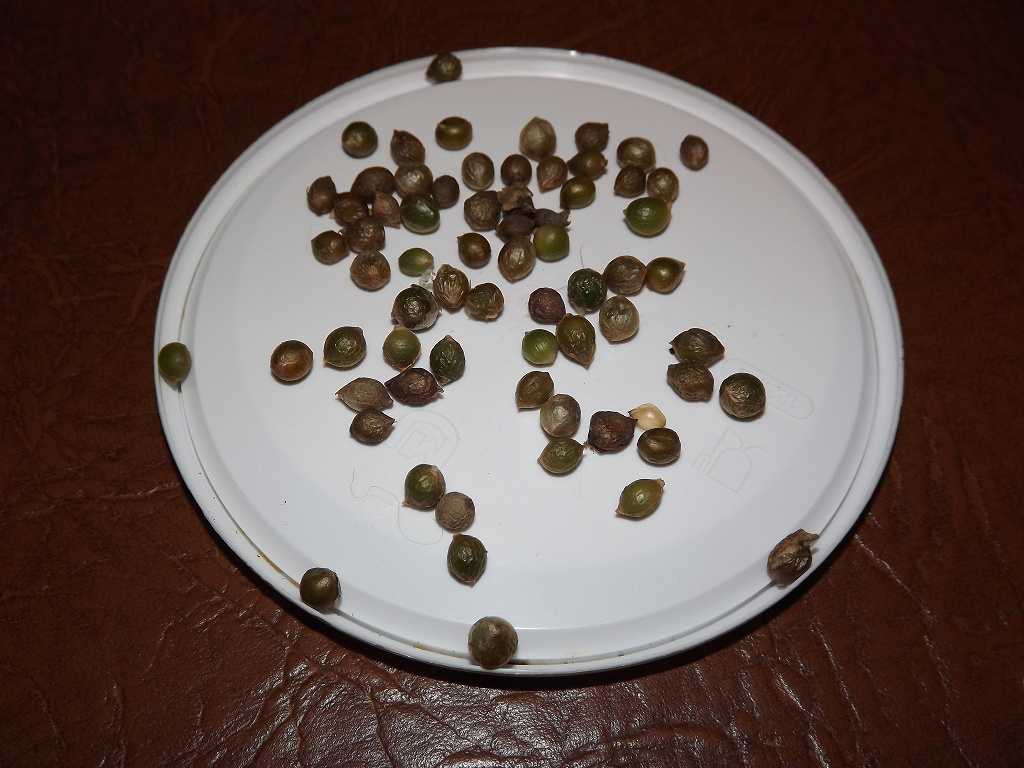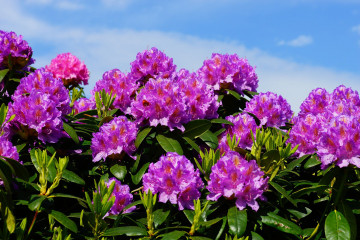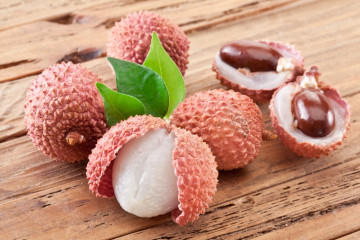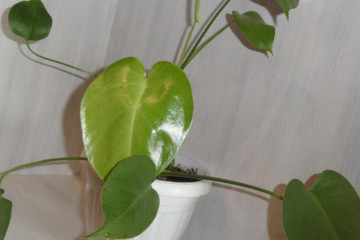Indian bow - what is it, what it looks like
Content:
Indian onions are often grown by traditional medicine experts who are studying their medicinal properties. Healers and healers keep this plant near agave, aloe, Kalanchoe. It is important to exclude contact of the plant with children, as it is conditionally poisonous.
Indian bow - what is it, what it looks like
Outwardly, Indian onions are similar to onions. Its root system is white. A green bulb lives up to 30 years. Long drooping leaves grow from it, which roll up to the ends into a tube.
When the leaves are broken, milky sap is immediately released. Even when the leaves dry up, the plant continues to grow. Their width reaches 5 cm, length - 1 m.
Use in traditional medicine
The healing properties are determined by the important elements that are present in the composition:
- essential oils;
- aromatic acids;
- glycosides;
- alkaloids;
- flavonoids.
The combination of substances in the milky juice of onions helps to improve metabolism at the cellular level, stimulates blood circulation.
The poultry garden will help get rid of diagnoses such as:
- osteochondrosis, radiculitis, arthritis, polyarthritis;
- sprains and injuries of the joints;
- bruise, swelling, abscess, bee and wasp sting;
- pain in muscles, sprains and tendons.
Recommendations on how to use the plant correctly:
- in case of colds, rub the brow ridges and the bridge of the nose with fresh onion juice;
- when migraine suffers, it is worth rubbing fresh leaf juice in the back of the head and temples;
- to combat joint pain, it is recommended to use a tincture of fresh leaves.
Decorativeness of the plant
Onions bloom in the spring for 2-3 years of life. A long, slender flower arrow grows among a bunch of twisted leaves, which grows up to 1 m in length. Many small buds appear on it in one brush. The blooming flowers are of a simple white color.
Indian onions are unpretentious and hardy enough. For the ability to form bizarre shapes and amazing compositions, the plant received the name - tailed poultry.
How to plant an Indian onion correctly
Before planting, you should prepare the soil, for this you need to mix the following components in equal proportions:
- leafy soil;
- sod soil;
- sand.
Experienced gardeners recommend planting Indian onions for everyone, growing at home is not difficult. The bulbs should be placed in clay pots. It is thanks to this material that the plant receives a sufficient amount of oxygen. Also, clay helps to cleanse the earth from salts and evaporate excess moisture.
For the rapid growth of the plant, you need to root the children in temporary containers. After they germinate and young leaves appear, they should be dug up and planted in a large pot with free space.An indoor bow should be planted following the following sequence of actions:
- At the bottom of the pot, it is necessary to pour expanded clay in a small layer. It helps prevent moisture stagnation and prevents root decay.
- With the second layer, you need to lay and tamp the soil mixture. Make a small hole in the center and water the ground. Water for this should be used only settled.
- A young onion must be placed in a hole and sprinkled with earth.
Then it is recommended to put the pot on a windowsill or in another warm place with direct sunlight.
Houseplant care at home
An indoor flower does not need undue attention. But he needs minimal care so that he pleases with his beautiful healthy appearance.
A young bulb requires frequent watering immediately after planting. Six months later, its size increases to 30 mm. Then it must be raised so that the upper part is not covered with earth. An open top will not hurt; rather, on the contrary, it promotes better plant growth.
In order to properly grow a bulb 3-4 cm in size, you need to water it less after reaching such dimensions. The flower needs oxygen supply to the roots, for this it is necessary to loosen the top layer of soil in the pot 1 time in 3-4 days.
Illumination and temperature conditions
Proper care is primarily about lighting. To do this, place the plant in direct sunlight. But in the summertime, you should avoid hitting the midday rays.
During the growing season, Indian onions require the following temperature regime:
- +20 .. + 22 ° С during the day;
- +12 ° С at night;
- average winter temperature is +10 .. + 15 ° С;
- minimum short-term -5 ° С.
It is recommended to avoid strong temperature fluctuations.
Watering rules and humidity
The plant will look healthy with constant watering with light drying of the earthy coma between treatments. After an excessively long drying out of the soil, the aboveground part dies off.
The most appropriate moisture level for plant development is moderate or low.
Top dressing and soil quality
To grow Indian onions, you need to feed them once every 30 days. For this, it is worth using mineral fertilizers, which contain a low level of nitrogen. Its concentration is 1/3 of the recommended volume for more indoor plants. Top dressing should be carried out from March to August.
For growing poultry, the permissible acidity of the soil mixture is pH 6.0-7.8. This property is provided in mixtures for cacti.
Plant propagation methods
There are 2 main types of breeding for Indian onions:
- Vegetative. In a pot with a growing adult bulb over 2 years old, many small daughter bulbs appear on the surface of the soil around the entire perimeter. They need to be separated in the spring and rooted in a separate container half the height. The pointed end of each should point up. You need to keep them after planting in the same way as adult plants.
- Seed planting is carried out during the spring-summer period. They usually germinate in their entirety. The soil recipe for this method is to combine peat and perlite in the same proportion. Seeds need to be sprinkled with soil 5-7 mm. They should germinate for 6-8 months in diffused sunlight. It is worth watering the seeds regularly by spraying, avoiding excessive drying of the soil.
How to transplant Indian onions
To ensure the full flowering and healing of the plant, it is recommended to transplant Indian onions in open ground during the warm season.At the same time, the bulb gains power and the flower grows rapidly.
The optimal time for a transplant is May. There are no night frosts at this time. The plant can take root and bloom in the shade and sun. During the summer, the poultry farm is saturated with many nutrients. It is important to often water and loosen the top layer of the earth in the flowerbed. It is recommended to spray the leaves in the morning. Autumn is such a time when the plant needs to be carefully dug up and planted in a pot, then brought into the house.
It is also recommended to replant the plant if the bulb has grown in size and becomes cramped in the pot or when the earth is knocked down into a dense ball after the onion has been in the same pot for a long time.
Having familiarized yourself with the basic rules on how to care for Indian onions, you can safely plant such a plant in demand in medicine at home.
